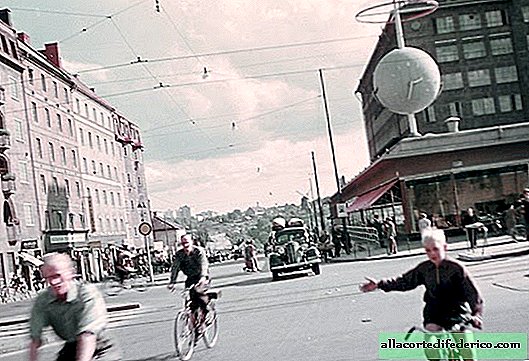Schengen biometrics: new rules for obtaining a visa to Europe
On September 14, 2015, Russia joins the EU Visa Information System, as a result of which the conditions for obtaining a Schengen visa change. From now on, to get into the EU countries, you will have to pass fingerprints and provide a digital photo. More details about visa processing were described in visa centers in Germany and Italy.

Biometric data.
Biometric data are fingerprints and digital photography. Previously, only visa applications from the USA and the UK required biometrics. Such data help the border services of these states to catch illegal immigrants and violators. It is worth noting that with each new application for a visa to these countries, biometrics must also be taken again.
The EU introduced the biometric data system in 2011. It works very simply: photos and fingerprints of the person applying for a visa are digitized and sent to the VIS (Visa Information System) database. With this information, European border guards can make sure that in front of them is exactly the person who received the visa.
The introduction of this system has nothing to do with politics and does not characterize the attitude of the European authorities towards Russian citizens. These changes are being implemented by the EU around the world.
If your passport already has a valid Schengen, then this visa is valid and allows you to enter the EU countries.
Why biometrics are needed.
The common visa system of the European Union:
- facilitates obtaining multiple Schengen visas with a large entry corridor;
- allow visa centers to process and store information more efficiently;
- protects visa applicants from identity theft.
In 2014, 5.76 million Russians received Schengen visas. This is almost a third of all issued Schengen in the world.
From September 14, 2015 the procedure for registration of Schengen will change. The cost of a visa will increase slightly, the first time it will have to be received in person, and at first delays in issuing documents are also possible. But the procedure will have to be done only once every five years, and the chances of obtaining a long-term multiple-entry visa will increase.
The old procedure for obtaining a Schengen visa.
Previously, you could get a Schengen personally, with the help of a travel agency or courier service. For this it was necessary to provide the following list of documents to the visa center or consular department of the embassy:
- completed visa application form;
- international passport;
- 2 photos measuring 3.5 × 4.5 cm on a light background;
- health insurance with a minimum coverage of 30,000 €;
- a certificate from work or study;
- account statement;
- copies of the pages of a common passport (sometimes also a foreign one);
- reservation of tickets and hotel;
- confirmation of payment of a consular fee of 35 € for a standard visa or 70 € for an express visa (service fee for visa center services - up to 30 €).

The new procedure for obtaining a Schengen visa.
From September 14, 2015, in addition to providing the above documents, for the delivery of fingerprints and digital photos you will have to personally come to the consulate or visa center.
Biometrics will be stored in a single EU information database for 4 years 11 months, during which data can be reused. And this means that such a procedure will have to go through only once every five years, this is the difference from the process of obtaining a visa to the UK and the USA.
Cons of the new system.
- More expensive visas. Visa fee remains the same, service fees of visa centers will increase. Each visa center will set the amount at its discretion.
- The first Schengen is necessary to receive only personally, even if you are going to travel through a travel agency. Some service centers promise to organize separate queues for such customers. In the future, there will be a service to call a specialist with equipment home or office. But when this happens and how much it will cost is still unknown.
- In the fall of 2015, visas will be issued longer than usual. Separate regional visa centers will not accept applications in mid-September, until the transition to the new system.
The advantages of the new system.
- More likely to get a long-term and multiple entry visa.
- Biometric data must be submitted once every five years.
- Consular fee will remain the same (35 €).
- All Schengen countries use the same database. Therefore, if in 2016 you pass fingerprints for a visa to Italy, in 2018 the Spanish Schengen will be issued to you without unnecessary paperwork.
- The EU guarantees the protection of your personal data. Information can only be used by European authorities, it is forbidden to transmit it to third parties or international organizations.
- In the long run, getting a Schengen visa will become faster and easier.
"Anyone will receive the right to contact the consular services of the EU with a request what specific data is stored in the database, and if necessary, correct them or require the removal of information that he considers collected in violation of the rules", - says Vigaudas Usackas, head of the EU Delegation to Russia.
Exempt from biometric data children under 12 years old; disabled people without hands or fingers from whom it is physically impossible to take fingerprints; heads of state and government, cabinet ministers, members of delegations and their spouses - provided that the trip to the Schengen countries is official.
Visas received prior to September 14, 2015 are valid. If you received Schengen before the introduction of biometrics, it can be used to travel to Europe, as before. But you will receive a new visa according to the new rules.
Residents of the regions do not need to go to the capital to submit biometric data. Schengen will be issued in the same place as before. The consular services and visa centers of the European Union operate in 37 cities of Russia, and if necessary, the EU is ready to open new ones.
When your passport is over and your biometric visa is still valid, the procedure remains the same. Cancel your old passport and take it with you on your trip with the new one. Then the visa is valid even in a passport that has served its own.

















